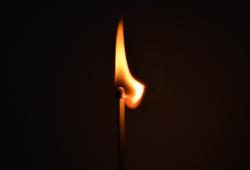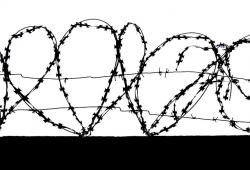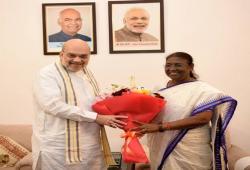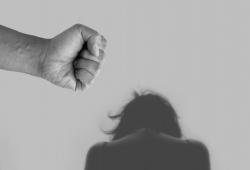In a week that India celebrates its 70th Independence Day, the pervasiveness and perniciousness of the caste system in all its discriminatory manifestations stands out. A citizenry fractured into dalits and non-dalits, the higher caste and the lower caste and the forward and backward tells us a lot about what the nation and its legal system has not been able to achieve in the seven decades since our “tryst with destiny”.
Intellectuals may have diverse opinions on the role of the legal system but on the ground, almost all victims of caste discrimination echo the simple fact that the law has not been able to kindle a ray of hope in their battered lives. The State for them is alien, not theirs.
On the one hand, the law has failed to provide the protection it was meant to, and we might ask if the legal system has reached its limits to contain caste-based discrimination. Could this have turned out better had the reservation based on social identity been introduced in the higher judiciary?
There are many who would not agree, not the least because the legal system has failed equally to address the issues of growing violence against women and the poor in general. Social change requires something more than the law.
Intellectuals may have diverse opinions on the role of the legal system but on the ground, almost all victims of caste discrimination echo the simple fact that the law has not been able to kindle a ray of hope in their battered lives. The State for them is alien, not theirs. It has taken me years to understand the unshakable and growing faith that the poor and the marginalised repose in fate and destiny; that gives them more hope when all the State and legal system offers them is despair.
It is a common practice for many courts to suggest to the victims of caste atrocities the possibility of an amicable settlement at the commencement of a trial in total disregard of the spirit of law. At a training programme to sensitise Sessions Judges handling cases of “atrocities” where I was invited as a speaker at the National Judicial Academy, I heard a senior Judge say: “Actually, we do not need law in this country. If everyone walked on the path of the Vedas and the Puranas, there would be justice”.
In one case that dates back two decades, the police had wrongfully confined a dalit youth over a stolen bicycle found in his possession in Gujarat. The youth had purchased it for Rs. 200. What followed was inhuman torture. The youth was unable to stand. I had filed a petition on behalf of my organisation seeking arrest of the police in the Gujarat High Court. The High Court was very disturbed to see the photographs of injuries on the deceased and sought to know from the public prosecutor defending the police, what action would the State take had the victim been the police?
The prosecutor’s reply was unforgettable: “The law differs from person to person”. I was less surprised to see the prosecutor continuing in office but was definitely surprised to see him elevated on the bench in the next few months, as the honorable Justice of a High Court. I was equally surprised by a dalit medical professional who had noted injuries on the body of the victim and the history of police atrocity and had testified before the court that his remarks on the case papers were a “slip of the pen”. The entire legal system, non-dalits and dalits, failed the Dalits in this case.
The failure to get legal justice, the nexus between the State and the perpetrators of the crime having political patronage, the widening gap between those who have and those who don’t, affect the minds of the Dalit youth in ways we do not yet fully understand.
We have not progressed much and the political ferment that is rising now has shorter term triggers but deeper roots.
The recent incident of public flogging of dalit youth near the police station and in the presence of the police in Una taluka of Gir Somnath district in Gujarat by the cow vigilantes is one of many such cases where the police have been either the mute spectator or the conspirator. The recently seen rapid rise of private armies and vigilante groups taking the law in their hands is a direct result of this inaction.
The Chief Minister promised speedy justice to the victims at Una, as was done in the earlier incident of Thangadh in Gujarat’s Surendranagar district where the police had shot and killed two youth. The State has filed a summary report with an interesting new finding: the guns had fired accidentally!
The failure to get legal justice, the nexus between the State and the perpetrators of the crime having political patronage, the widening gap between those who have and those who don’t, affect the minds of the Dalit youth in ways we do not yet fully understand. How do all these add up for our dalit youth in a connected, globalised environment, where they are also continuously exposed to the unruly scenes on the streets of Kashmir, or the bombings in the Middle East or the gun violence in America?
What remains clear is that the State has been unable to act on caste-based discrimination, let alone taking strong steps to root it out. A study by ‘Navsarjan’ titled ‘Understanding Untouchability’ to measure the prevalence of 98 forms of caste discrimination in Gujarat showed that in as many as 54 per cent of village public schools, dalit children are seated separately during the mid-day meal. Which direction these children go and what hope can they carry when they will grow into adults over the next five to 10 years? Will education hold any hope for social transformation or will it become one more avenue of frustrating despair?
With all the criticism that is being heaped upon the BJP-led government and the RSS, we must accept that had it radically taken up the mission of cleaning Hinduism of the evils of caste system such as untouchability, it would not have grown to its present status. The earlier Christian church too cooperated with the caste system to spread itself by converting brahmins into Christians and showing contempt towards the untouchables.
India has been walking unfortunately on the path of becoming a confederation of castes. There seems to be limited options for dalits in India for their ‘own’ independence. They have to create their own avenues of hope within their own segregation. As we stand today, reservation offers them a ‘special status’ but not ‘equal’ status. It will take a lot to change this.
(The author is an activist and the founder of Navsarjan, a grassroots Dalit organisation fighting for human rights since the 1970s)







